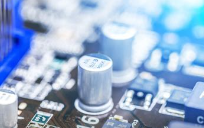In-depth discussion and practical properties of PN junction semiconductor diodes
As an indispensable basic component in electronic technology, the function and structure of PN junction diodes are crucial to understanding the entire semiconductor field. This article aims to explain in simple terms the construction, working principle and importance of this semiconductor device in practical applications, especially its rectification effect. The structure and working principle of PN junction diodes are not only of great significance to those technicians who specialize in electronic work, but also to scholars and enthusiasts who want to understand the principles of electronics in depth.
Construction details of PN junction diode
A PN junction diode is composed of N-type semiconductor and P-type semiconductor. The combination of these two semiconductor materials forms a PN junction. To simplify understanding, we usually describe PN junction diodes with reference to the two-dimensional structure of Figure (a). In this structure, N-type semiconductor serves as the base, and P-type semiconductor is implanted into it. Furthermore, the one-dimensional structure shown in Figure (b) is a specific representation of the AA' section in Figure (a). In addition, Figure (c) shows the symbol and current flow direction of a PN junction diode, which provides a basis for understanding its electrical characteristics.
When exploring its electrical properties, the IV (current-voltage) characteristic curve of a PN junction diode reveals its unique forward bias and reverse bias characteristics. In forward bias, when a positive voltage is applied to the diode, the current increases exponentially with the voltage. Under reverse bias, that is, when a negative voltage is applied, the current is almost zero, indicating the unidirectional conduction characteristics of the PN junction diode. However, if the negative voltage continues to increase, the diode may breakdown, causing a sharp increase in current, which is a special case in its electrical properties.

Rectifying effect of PN junction diode
One of the most notable applications of PN junction diodes is their rectification function, which is their ability to convert alternating current (AC) into direct current (DC). Through the rectifier circuit shown in Figure (a), we can observe the working principle of half-wave rectification: when the input voltage is positive, the current will flow through the diode to the load resistor, resulting in a voltage drop, while when the voltage is negative, the current will Will not flow. The effect of this half-wave rectification can be further smoothed by parallel capacitors and other components, ultimately achieving a more stable DC output.
Interpretation and importance of energy band diagrams
In the process of deeply understanding the working principle of PN junction diodes, energy band diagrams provide an intuitive way to observe and understand the behavior of electrons in semiconductors. When a semiconductor is in a grounded state, for example, applying a voltage of -0.5V on the right side will generate an electric field, causing the energy band diagram to appear tilted. In this state, the movement patterns of electrons and holes play a key role in the electrical properties of the PN junction. Electrons move toward lower energy levels, while holes do the opposite. Their movement and recombination process directly affect the conductivity of the PN junction diode.
When discussing the energy band diagrams before and after bonding, we can better understand how the N region and P region form a whole, and how the depletion layer is formed through the diffusion and recombination of electrons and holes. The existence of the depletion layer is crucial to the electrical properties of the PN junction. It not only affects the conductivity of the diode, but also affects its performance at different voltages.
By in-depth analysis of the structure, electrical characteristics and application of PN junction diodes in electronic circuits, we can better understand the working principle and application of this important semiconductor device. The study and application of PN junction diodes is not only basic knowledge for electronic engineers and technicians, but also a valuable resource for anyone who wishes to gain a deeper understanding of modern electronic technology.
